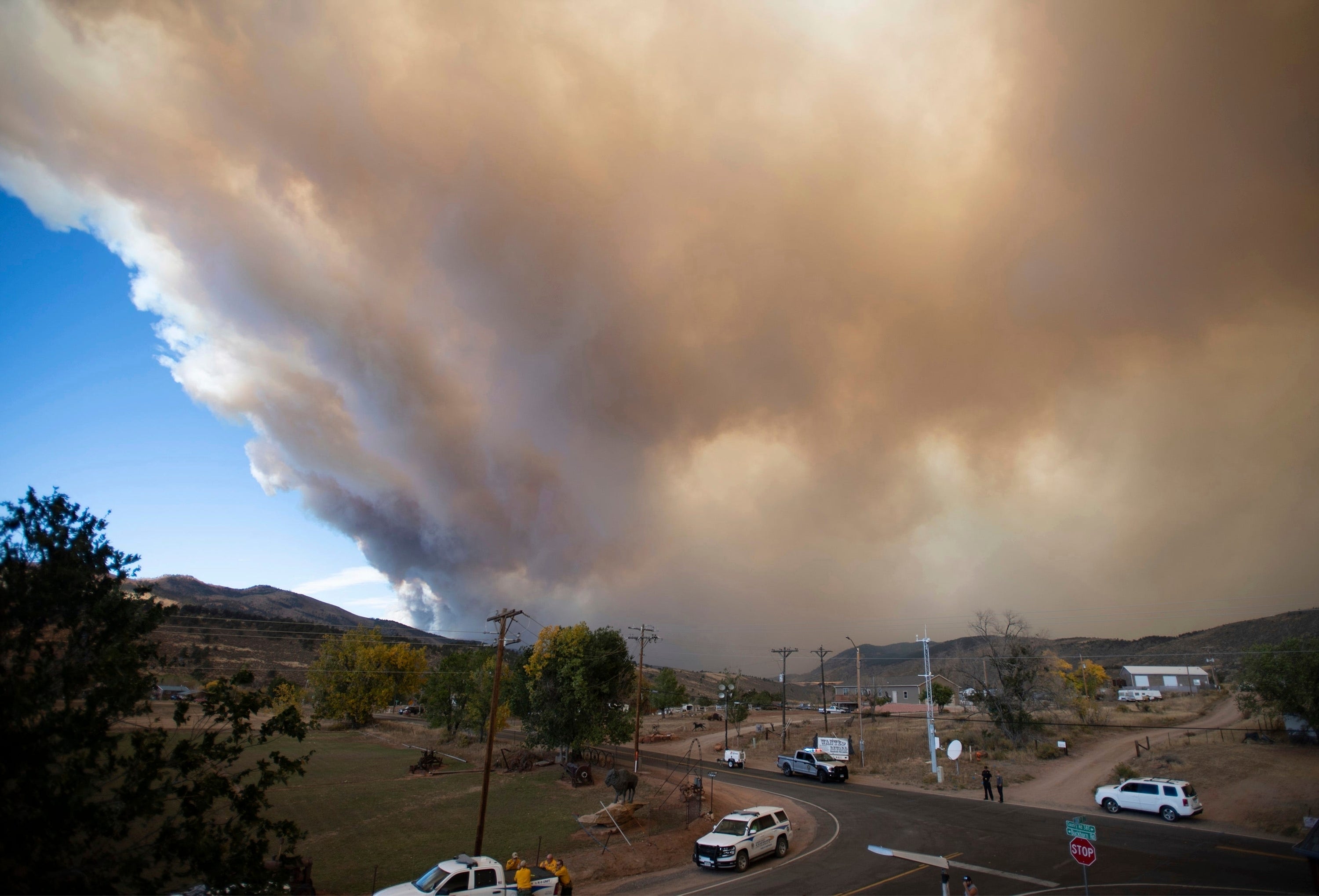Strong winds fan Colorado's largest recorded wildfire
The largest wildfire in Colorado history grew overnight as high winds pushed the blaze through rural communities and the forecast predicts more “extreme fire behavior” on Saturday

Your support helps us to tell the story
From reproductive rights to climate change to Big Tech, The Independent is on the ground when the story is developing. Whether it's investigating the financials of Elon Musk's pro-Trump PAC or producing our latest documentary, 'The A Word', which shines a light on the American women fighting for reproductive rights, we know how important it is to parse out the facts from the messaging.
At such a critical moment in US history, we need reporters on the ground. Your donation allows us to keep sending journalists to speak to both sides of the story.
The Independent is trusted by Americans across the entire political spectrum. And unlike many other quality news outlets, we choose not to lock Americans out of our reporting and analysis with paywalls. We believe quality journalism should be available to everyone, paid for by those who can afford it.
Your support makes all the difference.The largest wildfire in Colorado history grew overnight as high winds pushed the blaze through rural communities and the forecast predicts more “extreme fire behavior” on Saturday.
Gusts of up to 70 mph (112 kph) overnight created “very significant" fire activity, especially along the southeast section, said Cass Cairns, a spokeswoman for the Cameron Peak fire efforts.
“The plan today is to try to hold the fire to the east,” Paul Delmerico, operations chief for the Cameron Peak fire said early Saturday. “We're facing the same critical fire conditions today as we did yesterday."
They're expecting gusts of 60 mph (96 kph) midday, he said.
The fire grew to 293 square miles (759 square kilometers) by Saturday morning and was 57% contained.
Boulder County fire officials reported a new fire had sparked west of Boulder on Saturday afternoon. The Boulder Office of Emergency Management said on Twitter that Jamestown was being evacuated and Highway 7 was closed between the Peak-to-Peak Highway and the town of Lyons.
The new fire was near the Cal-Wood Education Center, which is about 17 miles (27 kilometers) from downtown Boulder. The Boulder County Sheriff's office said they were evacuating the Hall Ranch and Heil Valley trails due to the CalWood Fire.
Cameron Peak fire officials said fire activity had increased Saturday afternoon and a spot fire is growing east of the main fire and was moving toward Masonville.
People along U.S. 34, the highway leading to Rocky Mountain National Park, were evacuated on Friday but Delmerico said the town of Estes Park may be spared.
“The way the fire's moving and the lay of the land, the terrain, the features, the ridge lines, we that Estes Park is not out of the woods but we feel that as the fire progresses and moves to the southeast, the way it's moving ... we do feel that the community of Estes Park is not imminently threatened or in the direct line of fire."
A wind shift could change that, he said, but that was unexpected.
Firefighters focused on protecting homes in and around Drake and Glen Haven, an area with hundreds of cabins perched on heavily forested slopes and ridges. The wind, however, kept not only slurry-dumping airplanes from flying but aircraft that gave firefighters a view of the deteriorating situation from on high.
The Glen Haven volunteer fire department posted a notice early Saturday saying the “only place impacted by fire as of this morning is the far end of the Retreat near the Miller Fork/Copper Hill intersection. The fire is on Bulwark Ridge but has not made it to Bulwark Ridge Road.”
A voluntary evacuation zone extended as far as the Carter Lake area 8 miles (13 kilometers) west of Loveland for people who needed extra time and were advised not to wait for a dire emergency to leave.
The blaze set Colorado's size record after strong winds Tuesday night and Wednesday morning caused it to grow by more than 40 square miles (104 square kilometers).
The fire sent thick smoke into Fort Collins and prompted evacuations all the way to Horsetooth Reservoir on the city's western edge.
It started in mid-August in the high country 30 miles (50 kilometers) west of Fort Collins and has persisted despite getting over 1 foot (30 centimeters) of snow on Labor Day. It was over 50% contained before this week's flare-ups.
Twenty-five miles (40 kilometers) to the north of the Cameron Peak Fire, firefighters were also watching a windy forecast at the Mullen Fire on the Colorado-Wyoming line. The fire has grown little this week despite the recent wind.